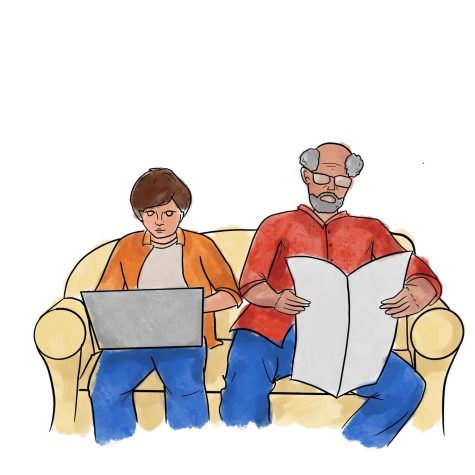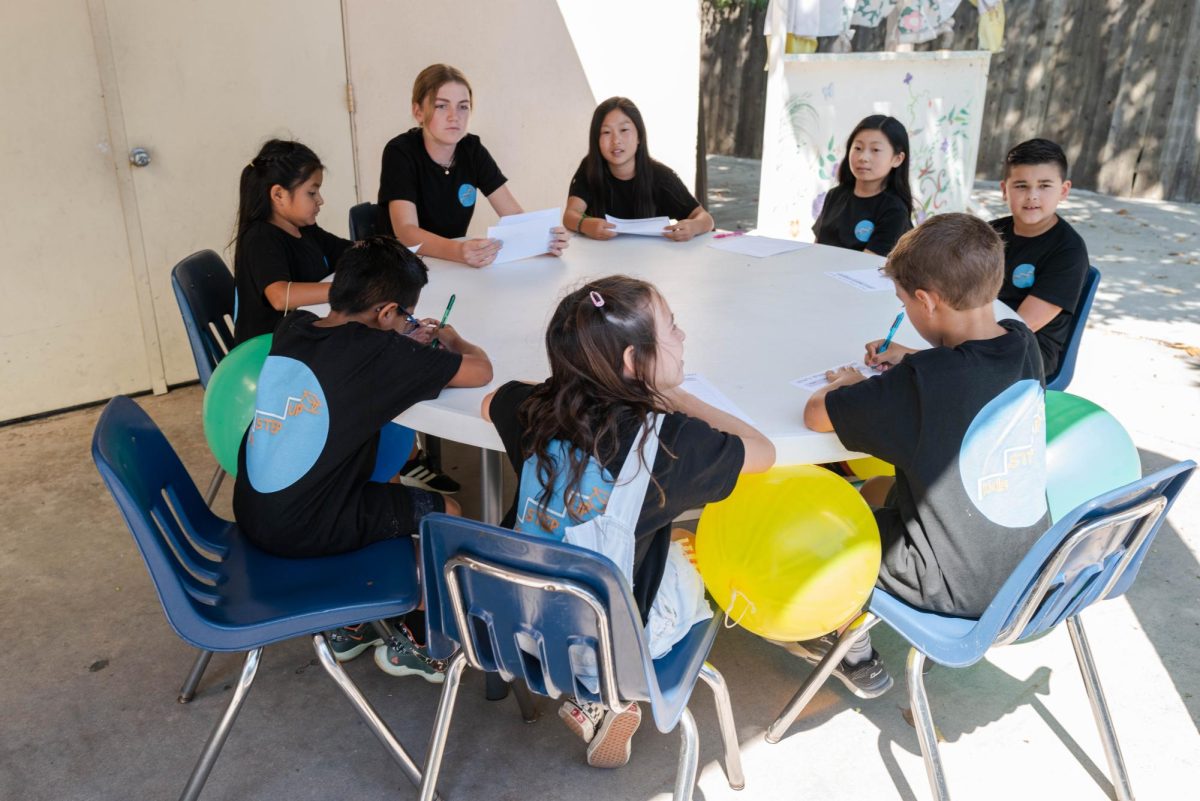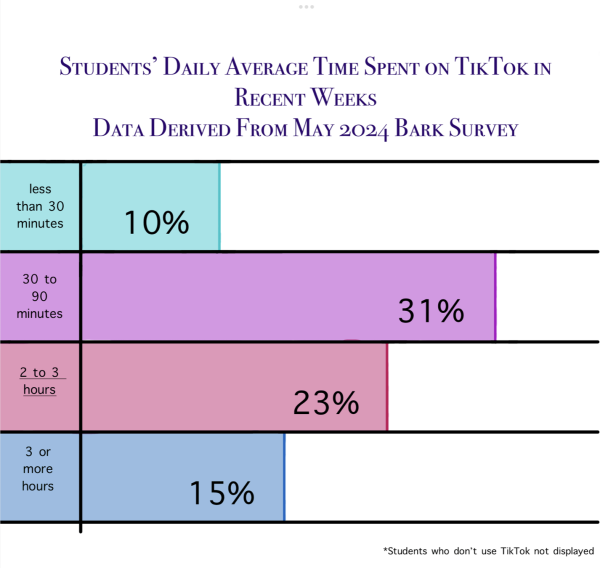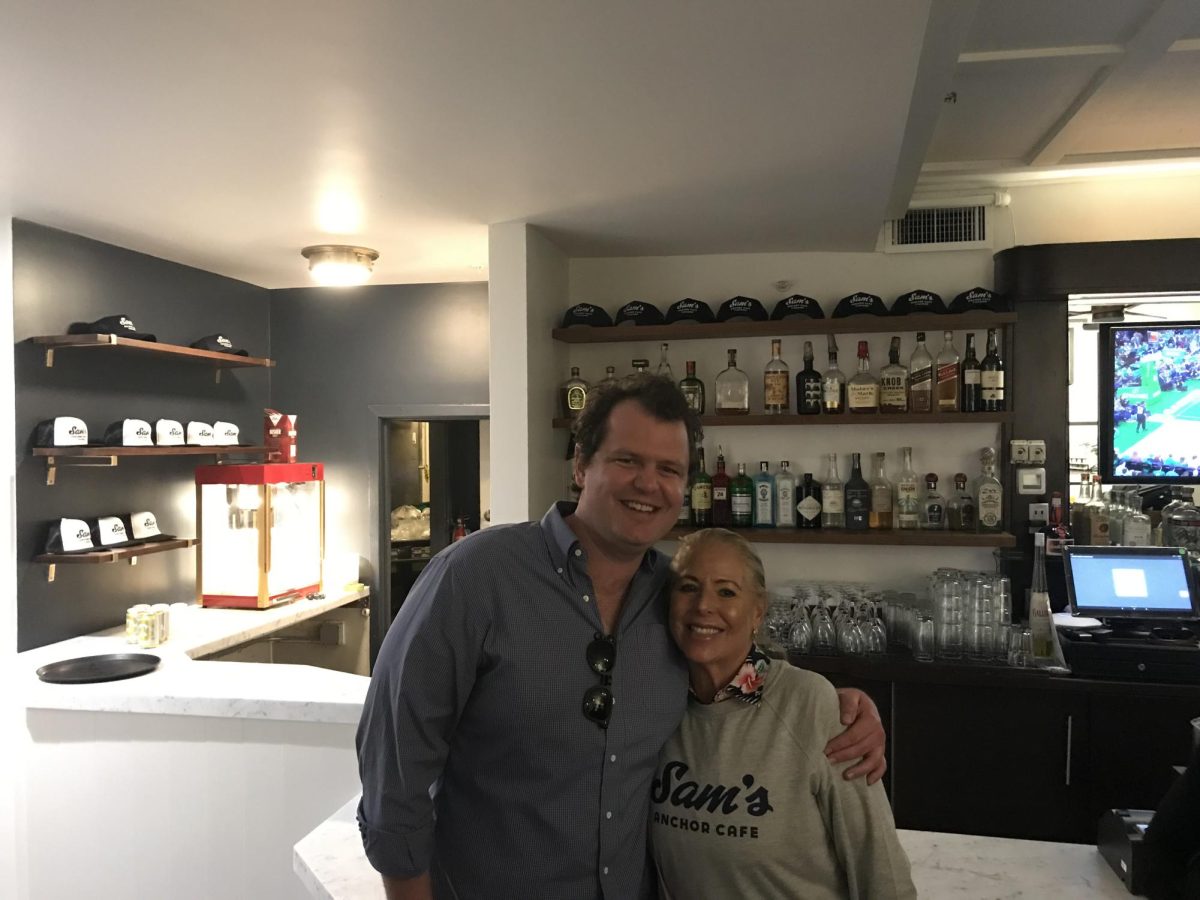A paperboy’s bike wheels rotate on the road through his neighborhood to deliver the Sunday paper. The freshly printed and rolled newspaper hits the driveway pavement with a “thump.” In a modern-day parallel, the repetitive “ding” notification, and a popup headline links readers to digital news conveniently from a mobile device.

The internet allows for an abundance of ideas, knowledge and communication worldwide. Major news outlets have built extensive online pages and social media presences reaching an audience of millions. Even with the act of opening a single browser tab, hundreds of live updated articles and other media are available to users in a single click.
The Redwood Bark itself produces several printed newspaper editions along with uploading online articles, video and podcast episodes to a centralized website. Digital news is a revolutionized symbol of the 21st century and the online connection of society. However, the implementation of electronic news impacts our world in a range of positive and negative ways through its connection to people of all generations.
Junior Jack Haubold finds social media and online articles to be his primary source of news and a common part of his daily routine. Haubold’s phone notifications alert him to the latest headlines and messages from reporters he follows on platforms such as Twitter and Instagram. To support Haubold’s comprehension of recent and historical text, he has taken courses like Honors American Government online and is currently enrolled in Advanced Placement (AP) English Language and Composition at Redwood. Honors American Government focuses on the First Amendment and the role of news in a democracy. AP English Language and Composition emphasizes ways to find accurate material through understanding sourcing, which has taught Haubold the importance of reading credible news and learning from fact-based sources.
“Now news sites are really geared towards clickbait headlines and getting the most site visits and clicks that they can. I think the shift to online news has definitely made it less credible and less factual and more focused on raising public emotion,” Haubold said.
Haubold sees a difference in the way information is relayed through generations. He recalls his grandparents receiving paper print copies of major news organizations including The New York Times and The Wall Street Journal, yet also mentions that his grandparents now visit online sites from significant publications as he does.

Ted Brown has been teaching at Redwood for over 25 years and currently facilitates the classes United States History and AP European History. Brown teaches document-based questions with historical context, which often incorporates primary sources found online.
“While I welcome the instant massive data that we all have access to, have to be careful and patient, and take your time looking at [online news],” Brown said.
Brown feels the internet offers significant insight into individuals’ direct experiences during global crises. He compares the vast available public information of current global events online to the limited pre-internet boom news. Brown most frequently uses online articles to receive his news and encourages his students to learn from credible publications on the internet as well.
According to the April 2022 Cub Bark Survey, 30 percent of Redwood students utilize online articles and 66 percent of students get their news from social media. Although online news seems to be a popular form of outreach to all age groups, social media has especially become a primary source for many people in the younger generations.
Sarani Puri, a sophomore, is well-versed in social media such as Instagram and Tik Tok in her daily habits and professional experiences. Puri is a social media manager for several nonprofits, overseeing the Marin County Instagram and organizing multiple accounts for her own Redwood-based clubs. For her, brand association and audience demographic are key components in managing social media. Additionally, she personally sees design as a significant part of news found on social media, and describes Instagram graphics as a novel way her generation consumes news.
“The news I am first to click on is the most visually appealing and the ones that seem the easiest to digest. Some people criticize news through social media but as long as it is real and credible, I do not see the harm in it,” Puri said.
While embracing the positive availability of information via the internet, Puri warns against exclusively using the internet as a source of news due to the increased spread of misinformation. Puri often discusses worldly events with her family and friends to fact-check her information and broaden her perspective. In general, she highlights the opportunities digital news offers through its wide platform and the positive impact of increased educational outreach from traditional forms of news.
While Haubold and Brown interact with media differently than Puri, Haubold from the perspective of a student utilizing social media, Brown as a teacher who is a knowledgeable consumer of online articles, and Puri as a digital news creator herself, all three believe a benefit of digital media is the access to information and the virtual community where people can sympathize with others through direct documentation amid societal events.
“[The internet] connects people and makes the events happening in the world real, even from hundreds of miles away,” Puri said.












